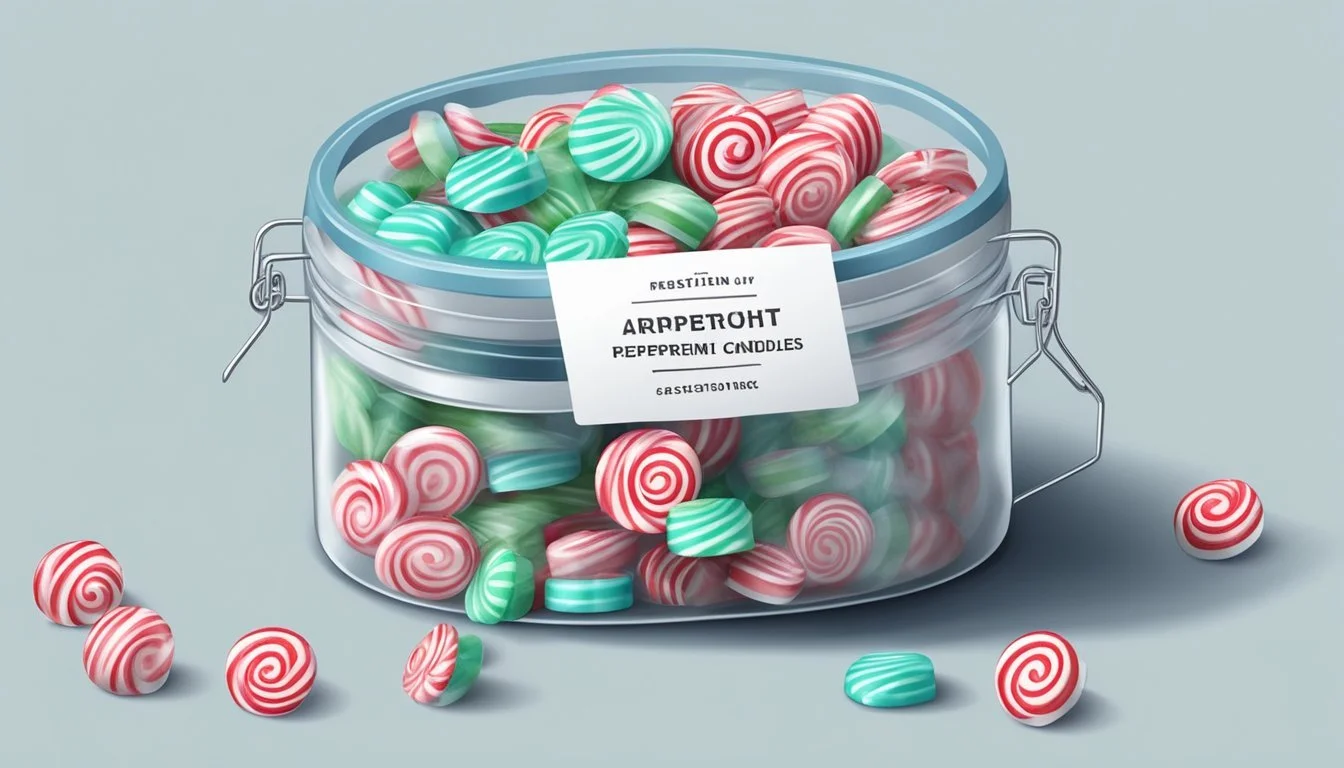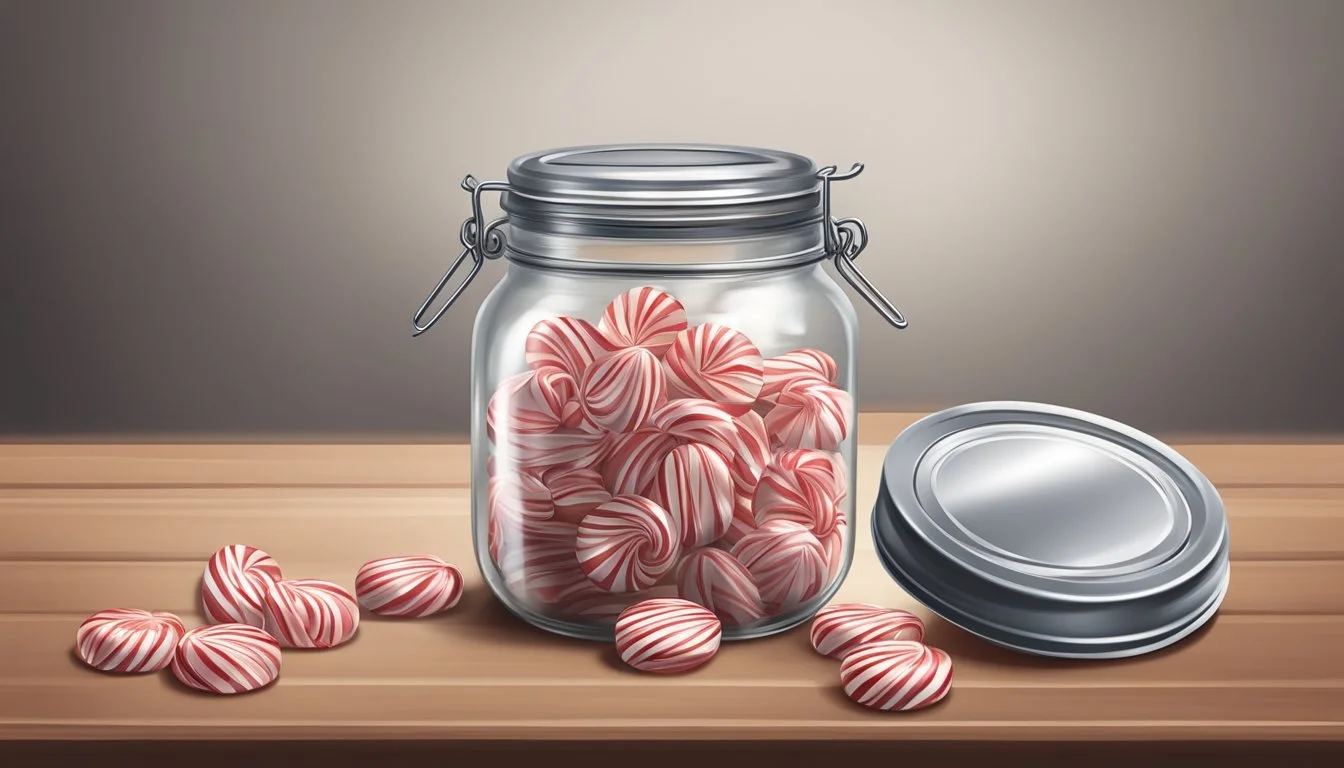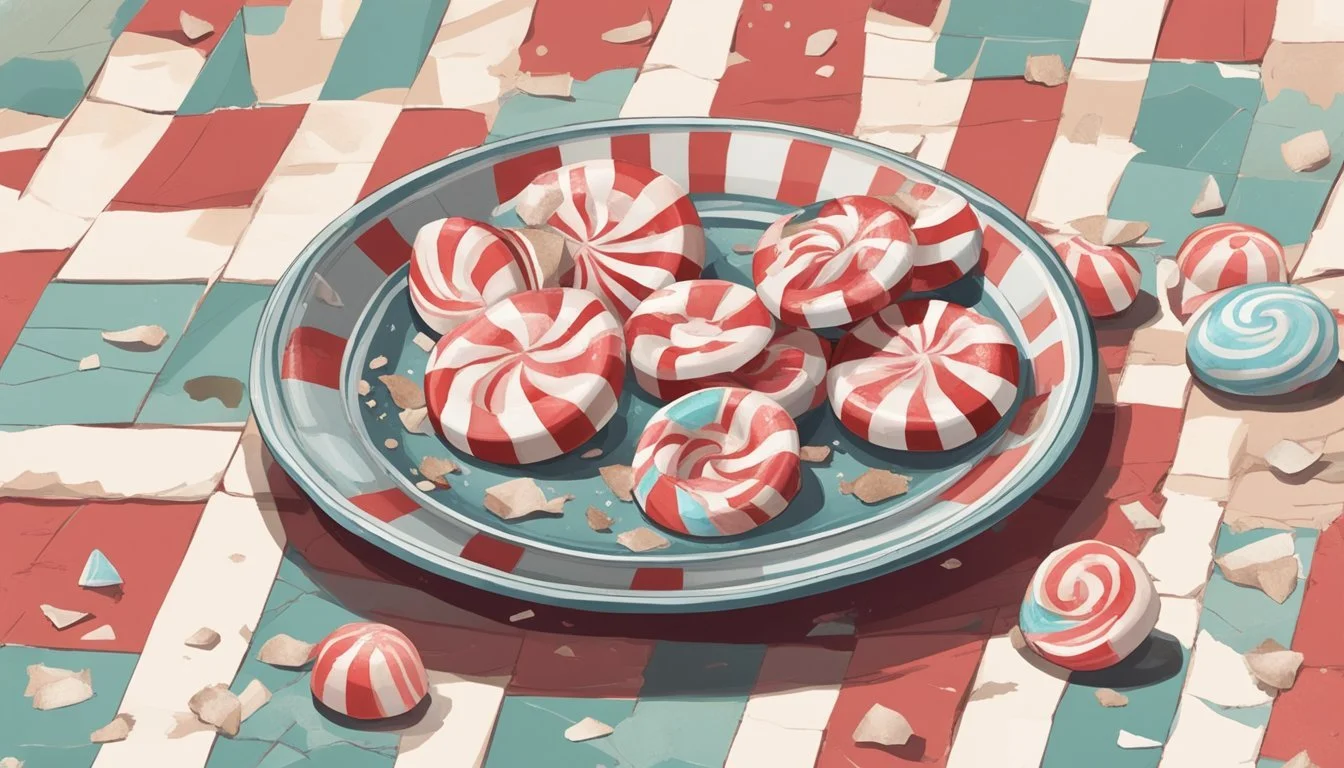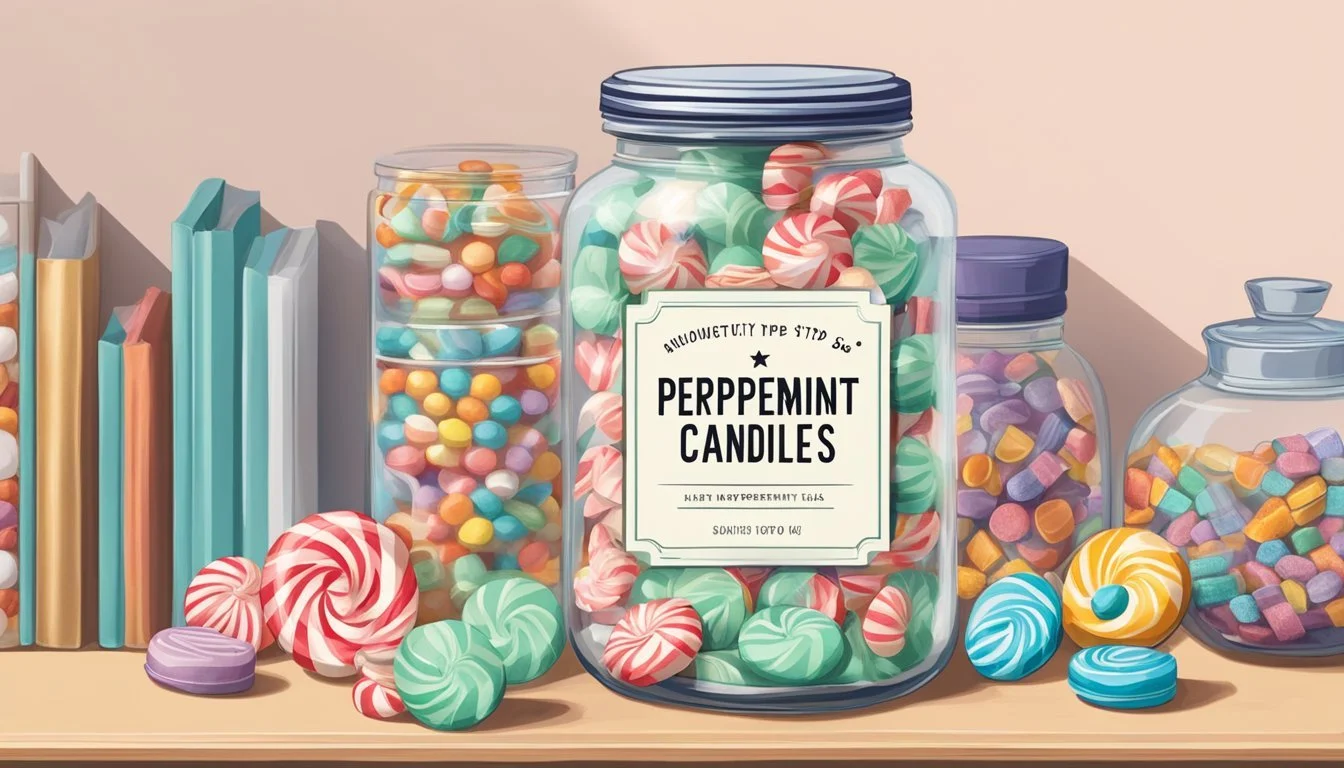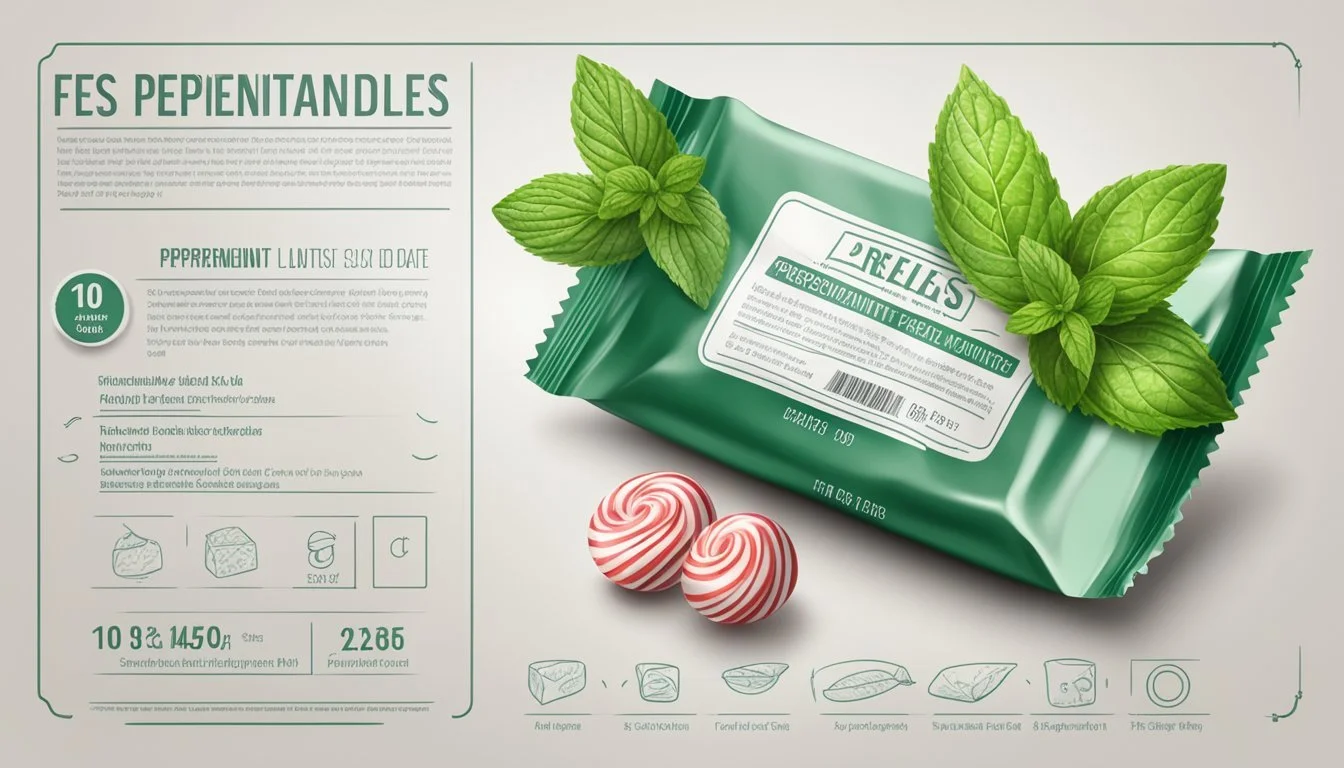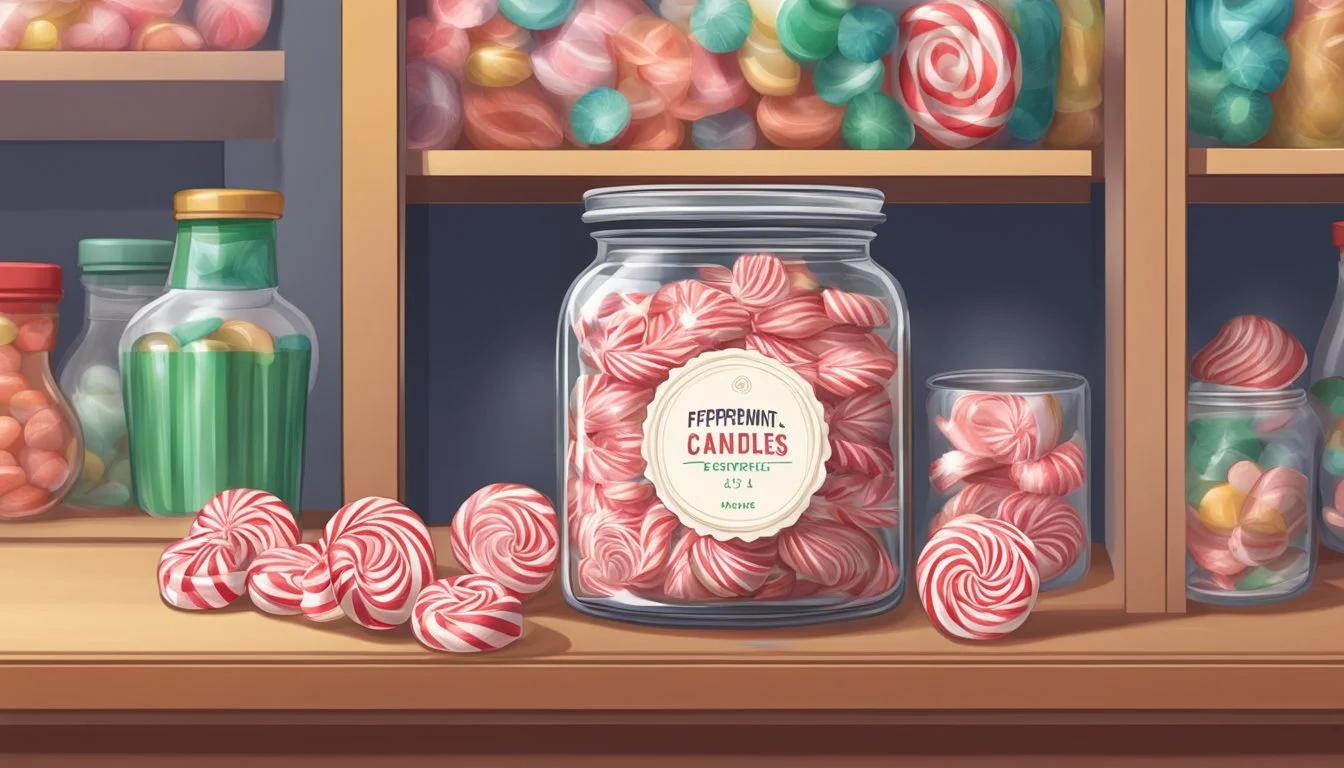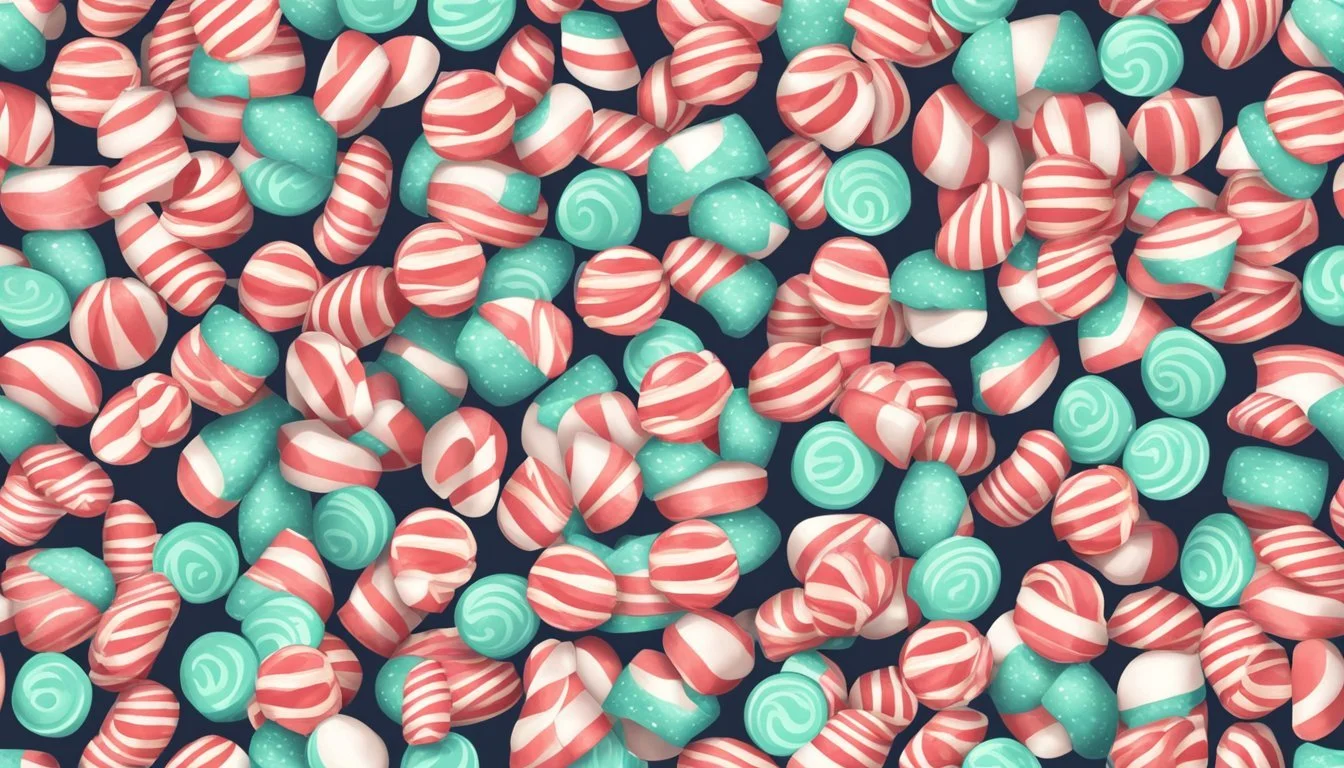How Long Do Peppermint Candies Last?
Unveiling Shelf Life Insights
Peppermint candies, known for their fresh and invigorating flavor, are a popular treat enjoyed around the world. When stored under the right conditions, these sugary delights have an impressive shelf life. The longevity of peppermint candies, such as peppermints and candy canes, hinges significantly on their storage environment.
Typically, unopened peppermints can retain their quality for as long as 6 months to 2 years from their production date. This duration can extend if the candies are kept in an airtight container, which protects them from moisture and light—two factors that can degrade the candy's quality. It's important to note that while peppermints remain safe to consume beyond this period, there may be changes in texture and intensity of flavor.
Regarding storage conditions, peppermints fare best in cool, dry areas. Excessive heat or humidity can cause them to become sticky and clump together, while cooler temperatures help in maintaining their firmness and preventing melting. For those living in particularly warm or humid climates, refrigerating peppermints can help preserve their freshness for about 12 months. However, freezing is generally not recommended as it can alter the texture and cause the candies to become overly hard.
Understanding Candy Shelf Life
The longevity of candy is influenced by various storage factors, and it is crucial to understand these to maintain quality. Specific types of candies, such as peppermints, come with expiration dates which serve as a guideline for consumption.
Factors Affecting Shelf Life
Several elements determine the shelf life of candy:
Storage Conditions: Candies last longer when stored in a cool, dry place to prevent the degradation that can occur due to heat and moisture.
Airtight Containers: Using an airtight container can significantly extend a candy's shelf life by minimizing exposure to air and moisture, which can lead to staleness or spoilage.
Light Exposure: To preserve quality, it's best to store candy away from direct light, which can cause discoloration and loss of flavor.
Heat: Extremes in temperature, especially heat, can alter the candy's texture and appearance, often resulting in a sticky or melted product.
Peppermint Candies and Expiration Dates
Peppermint candies are known for their long-lasting shelf life:
Expiration Date: The date indicated on packaging provides a conservative estimate of when a candy may start to decline in quality but does not necessarily mean it is unsafe to consume after that date.
Qualitative Maintenance: Proper storage helps in maintaining the quality of peppermint candies for about 12 months. However, they can remain safe to eat well beyond this period if kept frozen at 0°F.
Extended Shelf Life: Many peppermints, properly stored, demonstrate a remarkable lifespan ranging from 6 months to up to 2 years from their date of manufacture, and can potentially last even longer under optimum conditions.
Optimal Storage Conditions
The longevity of peppermint candies is closely linked to storage conditions. Proper storage can significantly extend their shelf life, keeping them fresh and flavorful.
Ideal Temperature and Humidity
Temperature: Peppermint candies are best preserved in a cool and dry place. A consistent temperature maintained between 60-75°F (15-24°C) is ideal as it prevents the candies from melting or becoming too hard.
Humidity: An environment with low humidity levels is crucial. Ideally, the relative humidity should be less than 50% to prevent the candies from becoming sticky or clumpy.
Protecting from External Factors
Storage Containers: It is important to store peppermint candies in airtight containers. These containers protect them from external odors, moisture, and pests which can degrade the quality of the candy.
Storage Location: A pantry or cupboard that is away from direct sunlight, heat sources, and drastic temperature changes is the most suitable location. Refrigeration is not typically required, but in hot climates, it may be necessary to keep them away from heat.
By adhering to these storage guidelines, peppermint candies can be kept in optimal condition, ensuring they last as long as possible without diminishing in quality.
Specific Storage Techniques
Efficient storage of peppermint candies extends their shelf life and preserves their flavor and texture. Two primary scenarios exist: storing sealed candies and handling opened ones. The techniques vary depending on whether the package is unopened or has been opened, but maintaining an appropriate environment is critical in both cases.
Best Practices for Sealed Candies
Unopened packages of peppermint candies have a longer shelf life, usually ranging from 6 months to 2 years when stored correctly.
Room Temperature: Keep unopened peppermints in a cool, dry area away from direct sunlight and heat sources.
Refrigerator: For extended storage, one can store sealed candies in the refrigerator, although it's usually unnecessary unless specified by the manufacturer.
Handling Opened Peppermint Candies
Once the seal is broken, peppermint candies require more cautious storage measures to retain their quality.
Airtight Containers: Place opened peppermints in an airtight container or heavy-duty ziplock bag to prevent exposure to air and moisture.
Examples: Tupperware, mason jars, or freezer bags.
Location: Store the airtight container in a cool, dry place. Room temperature is typically adequate, but the refrigerator can be used if the surrounding environment is warm or humid.
Freeze: Freezing is an option for long-term storage, but might alter the texture, making the candies harder than preferred.
Signs of Deterioration
Peppermint candies, like any food product, can deteriorate over time. It's important to recognize the signs that indicate when they are no longer at their best quality.
Visual and Textural Changes
The appearance and texture of peppermint candies provide the initial clues to their quality. Peppermint candies should be glossy and firm. When they begin to look dull or hazy, it is an indicator that they may be absorbing moisture, which can lead to a decline in quality. One should also look for changes in texture; peppermint candy that has become sticky or show signs of crystallization suggests they've been exposed to air or humidity and are past their prime.
Flavor and Odor Alterations
Another aspect to consider is the flavor and scent of the peppermints. Fresh peppermint candies have a vibrant minty flavor and a strong, refreshing odor. Over time, these candies may lose their potent flavor and can become stale. If they have an off odor or taste noticeably different from when they were first purchased, this suggests that they should be discarded to ensure the best quality and taste experience. Mold is not typically an issue with peppermints due to their low moisture content, but any presence of mold would also indicate that the candy should be thrown away.
Longevity Tips and Tricks
Preserving the freshness of peppermint candies involves proper storage and a bit of creativity when they begin to age. Here's how to ensure they last longer and remain enjoyable to consume.
Extending Candy Life
Store peppermints in a cool, dry place to maintain freshness for the longest time. They should be kept in airtight containers or heavy-duty freezer bags, away from moisture and light. In the freezer, set at 0°F (-18°C), hard candy can be safe indefinitely, although best quality is maintained for about 12 months.
At Room Temperature:
Use airtight containers.
Keep away from heat sources and sunlight.
In the Freezer:
Store in heavy-duty freezer bags.
Ensure temperature is constant at 0°F.
Creative Uses for Aging Candies
When peppermint candies start to lose their appeal for direct consumption, they can be repurposed. Crush them for a flavorful addition to various recipes, or melt them down as a decorative topping for ice cream or incorporation into baking. Here are specific ways to give aging peppermints new life:
Mix into cookie or brownie batter for a minty twist.
Sprinkle over ice cream or use as a layer in homemade ice cream cakes.
Stir crushed peppermints into hot chocolate or coffee for added flavor.
Impact of Ingredients and Packaging
The longevity of peppermint candies is significantly influenced by their composition and the materials used to wrap them. These two factors work jointly to maintain freshness and prevent deterioration.
Role of Sugar and Preservatives
Ingredients such as sugar play a pivotal part in preserving peppermint candies. Sugar acts as a natural preservative by inhibiting the growth of microorganisms that can cause spoilage. Most peppermint candies are high in sugar, which can extend their shelf life.
In addition to sugar, some manufacturers might add preservatives to further prolong the durability of the candies. These preservatives help in maintaining quality and freshness over time, especially in products that include natural ingredients which may be less stable.
Packaging Materials and Candy Longevity
The packaging of peppermint candies is crucial in determining their shelf life. Effective packaging materials prevent exposure to air, moisture, and light, all of which can accelerate deterioration.
Materials: Common packaging options include plastic wrappers, foil, and airtight containers which help preserve the candies' flavor and texture.
Seal: Airtight seals protect the candies from external contaminants and prevent the loss of natural aroma and taste.
The combination of the right ingredients and high-quality packaging materials can aid in significantly extending the shelf life of peppermint candies, ensuring they remain safe and enjoyable to consume for an extended period.
Safety and Consumption Considerations
When it comes to peppermint candies, ensuring safety and understanding nutritional implications are crucial. Consumers should recognize when to discard candies and consider health aspects before consumption.
When to Dispose of Candy
Expired Peppermint Candies: While hard peppermint candies typically have a long shelf life, consumers should inspect for signs of spoilage like discoloration or an off smell. Condensation inside the packaging can also indicate the presence of moisture which can lead to mold. If mold is observed or if the candies have changed texture or consistency, it is best to discard them.
Signs of Spoilage:
Discoloration
Off smell
Presence of mold
Unusual texture or consistency
Peppermint candies should ideally be stored in a cool, dry place. If the storage conditions are compromised, this may shorten the lifespan of the candy, and it may become harmful to consume.
Health and Nutrition Aspects
Nutritional Content: Peppermint candies mostly contain sugar and should be consumed in moderation. The peppermint oil (how long does peppermint oil last?) in some candies can have a relaxing effect on the gastrointestinal tract muscles, yet people with certain health conditions such as GERD or a history of gallstones should avoid them. Additionally, those taking certain medications should consult with healthcare providers as peppermint can interact with some drugs.
Caution for Specific Groups:
Individuals with gastroesophageal reflux disease (GERD)
Those with a history of gallstones
Persons taking medications that could interact with peppermint oil
In terms of nutrition, peppermint candies typically offer minimal nutritional benefits beyond their flavor, and high consumption may not align with dietary health goals. Therefore, individuals should consider their own health conditions and nutrition goals when consuming peppermint candies.
Special Cases and Exceptions
In this section, we examine specific conditions that can alter the longevity of peppermint candies, including extreme storage environments and the varying shelf lives of different candy types.
Dealing with Extreme Conditions
Storing peppermint candies in extreme conditions can significantly affect their quality and safety. When kept in the freezer, peppermint candies can remain safe to consume indefinitely, but the best quality is typically maintained for up to 12 months. To avoid freezer burn, they should be stored in airtight containers or heavy-duty freezer bags. Despite their resilience in cold, freezing and subsequent thawing can alter their texture, potentially leading to a less pleasant mouthfeel.
Candy Variants with Different Shelf Lives
Not all peppermint candies have the same shelf life. For instance, candy canes may last up to a year when stored in ideal conditions, while peppermint chocolates can have a shorter shelf life due to the nature of chocolate, which is sensitive to temperatures and can develop a white coating called 'bloom' if exposed to temperature fluctuations. Other candies, like gummy peppermints, are typically good for six months to a year and should be kept in a cool, dry place to prevent degradation.
Note: The specific shelf life of peppermint candies can also vary by brand, so consumers should always check the packaging for expiration dates and storage recommendations.
FAQs and Common Misconceptions
This section provides clear answers to frequent questions and corrects common misunderstandings related to the shelf life and storage of peppermint candies.
Addressing Popular Questions
How long do candy canes last?
They can typically last up to 12 months when stored at room temperature in a proper condition.What is the best method to store peppermint candies?
Storing them in an airtight container away from moisture and direct sunlight is ideal.
Dispelling Candy Myths
Myth: Candy canes last indefinitely.
Fact: Peppermint candies, including candy canes, have a shelf life and are best consumed within 12 months.Myth: Only the taste matters in determining if peppermint candy has gone bad.
Fact: Appearance and smell are also crucial indicators. If the candy is discolored, sticky, or has an unpleasant odor, it may have expired.
Indicator Good to eat May have gone bad Appearance Retains original color and shape Discolored, cloudy, sticky, or mushy Smell Fresh minty aroma Unusual or unpleasant odor Texture Crisp, breaks cleanly Soft or has changed texture significantly
Proper storage includes keeping the candies in a cool, dry place, ideally wrapped in parchment to maintain the flavor and prevent sticking. Remember that while peppermint candy is often enjoyed for its festive and colorful appeal, storage plays a critical role in preserving their mint flavor and quality.


